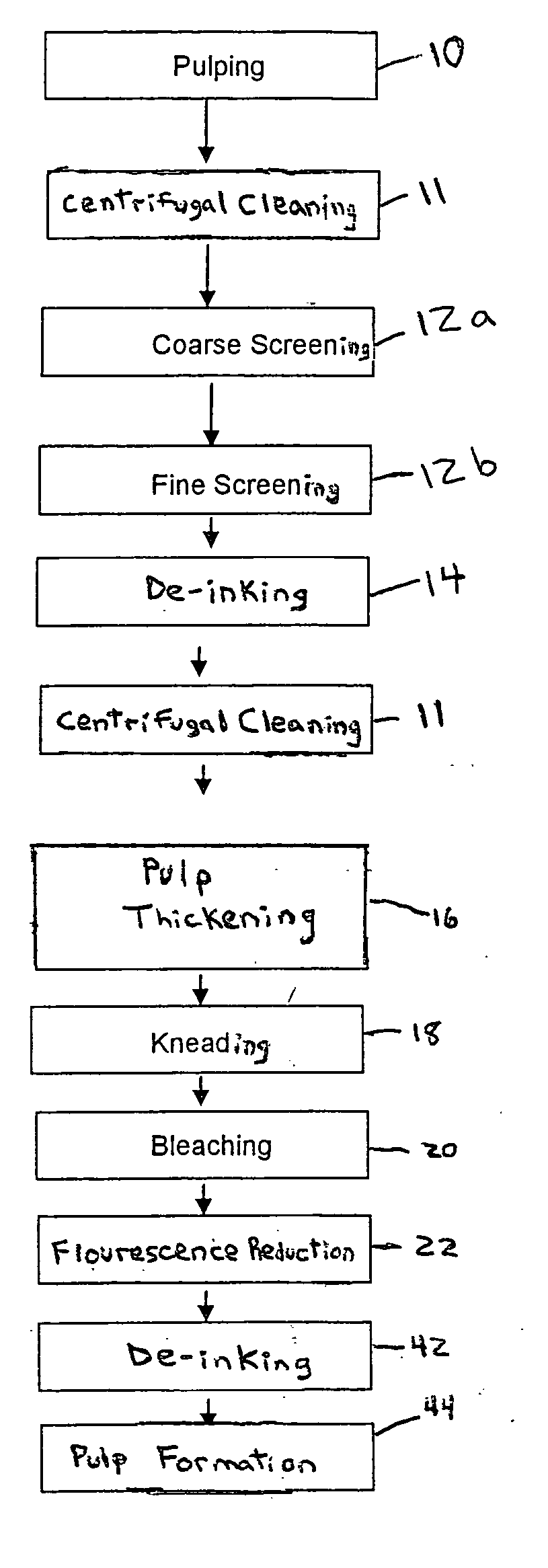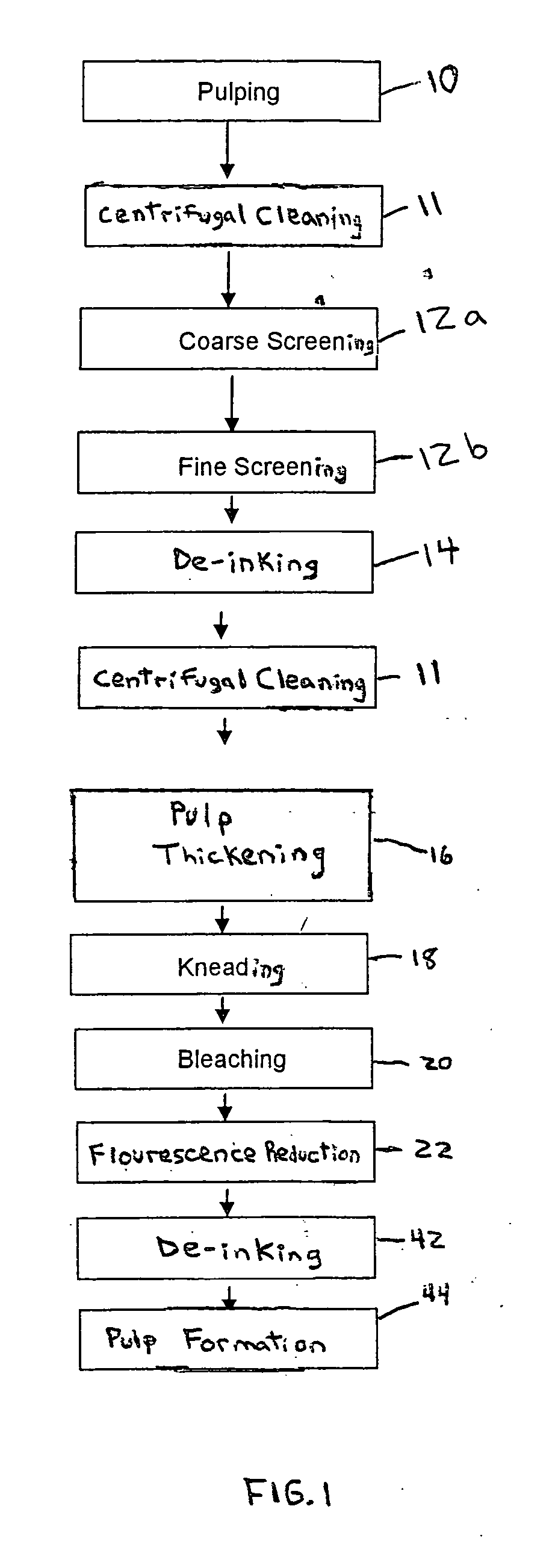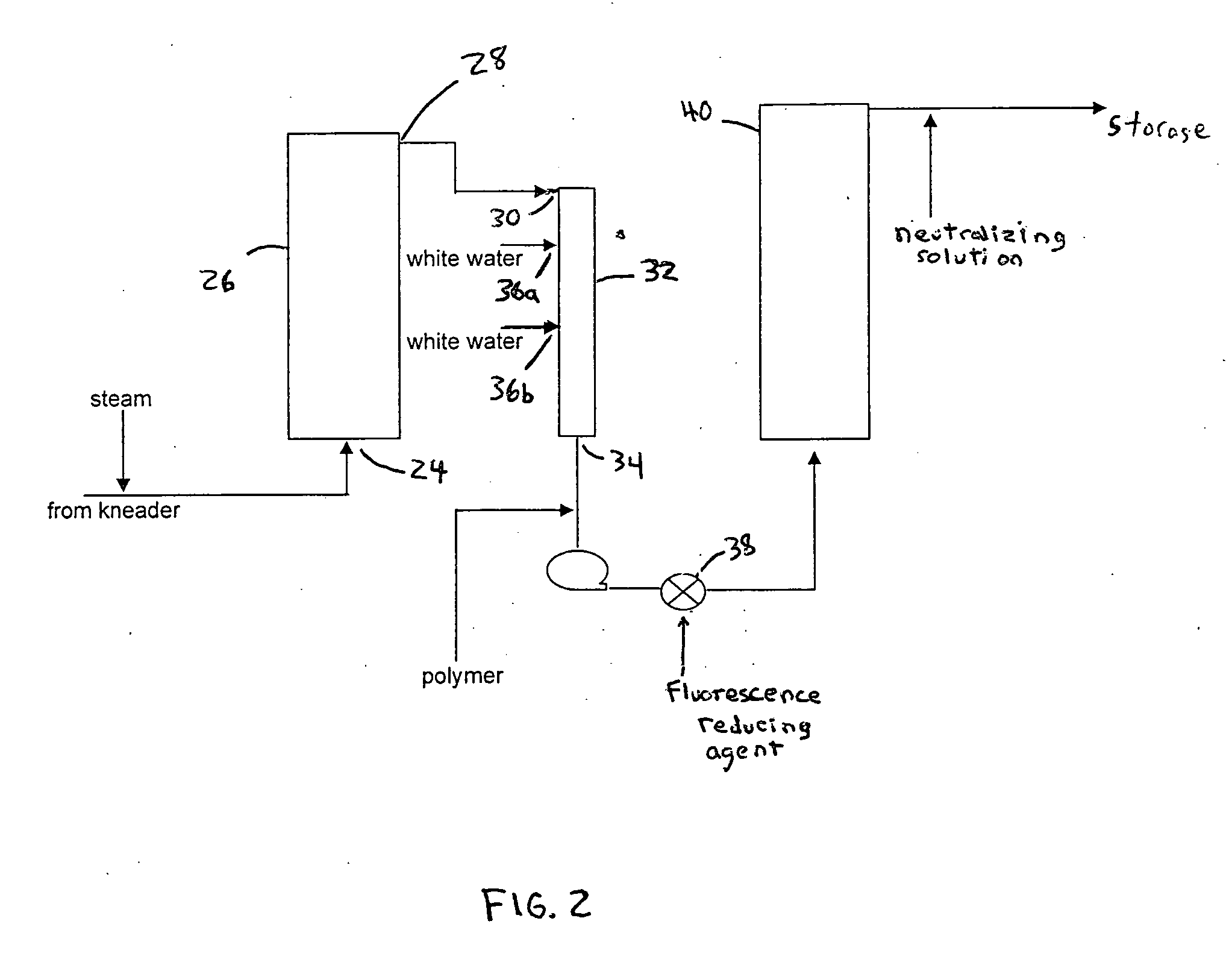Methods for reducing fluorescence in pulp and paper
a technology of pulp and paper, applied in the field of paper processing, can solve the problems of reducing the apparent whiteness and/or brightness of the resulting paper, limiting the content of fluorescent agents in paper products intended for contact with food, and whitening agents characterized as poisonous and/or deleterious substances, etc., to achieve the effect of reducing and eliminating fluorescence in pulp
- Summary
- Abstract
- Description
- Claims
- Application Information
AI Technical Summary
Benefits of technology
Problems solved by technology
Method used
Image
Examples
Embodiment Construction
[0012] Methods for reducing, and in some cases eliminating, fluorescence in pulp and paper, as well as the resulting articles, are provided. The methods destroy fluorescent activity of agents (e.g., whitening agents) which may be present in the pulp during processing. The methods are particularly applicable to recycling processes that use waste paper that includes fluorescent whitening agents. The methods may be used to produce recycled pulp and paper that, for example, may be suitably used in food grade applications which require no, or minimal, amount of fluorescence. In some cases, the methods also advantageously enable production of recycled pulp and paper that has reduced amounts of phosphorescence or no phosphorescent activity at all.
[0013]FIG. 1 illustrates the steps of processing recycled paper to produce recycled pulp having reduced fluorescence according to one method of the present invention. It should be understood that the present invention is not limited to these proc...
PUM
| Property | Measurement | Unit |
|---|---|---|
| concentration | aaaaa | aaaaa |
| concentration | aaaaa | aaaaa |
| concentration | aaaaa | aaaaa |
Abstract
Description
Claims
Application Information
 Login to View More
Login to View More - R&D
- Intellectual Property
- Life Sciences
- Materials
- Tech Scout
- Unparalleled Data Quality
- Higher Quality Content
- 60% Fewer Hallucinations
Browse by: Latest US Patents, China's latest patents, Technical Efficacy Thesaurus, Application Domain, Technology Topic, Popular Technical Reports.
© 2025 PatSnap. All rights reserved.Legal|Privacy policy|Modern Slavery Act Transparency Statement|Sitemap|About US| Contact US: help@patsnap.com



